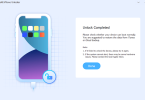While everyone is so desperate to reach the top of the SERPs and improve SEO, many people forget about the basic thing that can significantly speed up the page loading process — Magento speed optimization. We’re willing to bet that if you test your site’s speed, you’ll notice that content takes a significant amount of time to load compared to other processes. And to get more traffic, you need to take care of a lot of staff, including website performance, which is affected by images.
One of the most important advantages of Magento is that it is a flexible platform that allows you to optimize almost every element of the site to make it more convenient and functional. To all those who want to speed up your online store, today we want to tell you about some of the most effective techniques for optimizing site images on your eCommerce platform, which allow you to increase site traffic, increase the average check and make your online store more attractive to the user.
Contents
Ways to Speed Up Image Loading
E-commerce is all about content and images. Product photos, design solutions, various social media content — customers want to see what they are buying and interact with your site as much as possible. The first impression about the opened page they get from the visual component — is pictures. But there is the biggest problem with images: they slow down the site significantly. Luckily, Magento is not difficult to optimize, you just need to know which tools to use and how to do it. Let’s take a look at 5 ways to reduce image loading time.
Using Text and Icons
Undoubtedly, images help to attract more users, draw attention to certain products, and increase the number of conversions and the average basket check, but this does not mean that only images should be used. If you go too far, you will get a sticky and very slow site that will only repel potential customers from making a purchase. The site loading should improve significantly if you try to substitute some of the images with text using different fonts and icons. Think about where you can replace some logos, unnecessary images, etc., to speed up the site.
Choosing the Proper Format
In web development, there are no strict rules regarding the format of images. The choice is determined by the ratio of the size and quality of the picture. Detailed widescreen photos look attractive but take a long time to load. Choosing a format allows you to find a balance. In short, there are 3 main image formats:
- JPG: relatively high image quality and relatively small file size
- PNG: high image quality and large file size
- WebP: high image quality and small file size
There is one good general rule regarding the option of format for images. It consists of the fact that it is recommended to apply the JPG format for photographs, and the PNG format for drawings, diagrams, and other similar. But the JPG and PNG image formats are large and not quite new, making them take longer to load and slow down your online store. Luckily, Google has developed WebP, a next-generation file format supported by most browsers. With this format, you get the same image quality but with a smaller file size. Thus, images load much faster.
Using SVG Whenever Possible
Our next tip is to use vector images. The reason for this is simple: bitmap images such as JPEG, PNG, etc. are made up of many square pixels arranged in a grid. And the larger the image, the more pixels you need to download. Also, pixel art doesn’t scale well. SVGs, on the other hand, are made up of geometric drawing instructions, such as shapes, paths, lines, etc., that are pixel-independent. In addition, you can easily work with them by changing the shape and adding elements, providing maximum customization. These are just some of the advantages of vector images over raster images. Therefore, as you can imagine, using them can benefit you and your Magento store in various manifestations.
Compressing and Resizing
The simplest and most effective methods to optimize Magento 2 images are resizing and compressing. Resizing an image usually means reducing the number of pixels and expanding the image. This significantly affects the quality of the image if the number of pixels is too large. Image compression is putting data into a reduced space. If you reduce the number of pixel bits, then the loss is inevitable. And if you just scale down the file size without changing the quality, then you can do without loss. But the best option is to combine these two methods. This way you reduce the number of pixels and compress images without loss. This can be done with any available photo editor or with one of the Magento automation extensions.
Using a CDN
Optimizing images on a web resource is not enough to make them lighter in weight. Another fairly affordable way to improve performance is to use a Сontent Delivery Network. What is the essence of the work of the CDN: the resources of the site using the CDN are copied to the network servers. When a buyer opens an online resource on his PC, the CDN works similarly to a proxy server, finding the server closest to the user, and all the necessary images are transmitted along the shortest path. As a result, the page loading speed of the site is significantly increased.
CDN is an additional content provider that has a direct connection to local networks and provides fast data transfer and content download speeds. This technology works for the benefit of users, as it facilitates and speeds up the search for the necessary information on the Internet. This is one of the most popular ways to get the most out of images in Magento 2, as everything happens automatically and does not require your active participation.
More from us: Improving Your WordPress Website Security in 2022
Summarize
There are many ways to speed up your Magento online store, from improving client exploitation to optimizing content. And in today’s article, you learned a little more about the second. As you understand, image optimization significantly improves the process of using the site, because after such optimization it works faster, and the visitor of the site will not be distracted from making a purchase. Images are a complete tool for eCommerce platform optimization and conversions. Of course, the tips described in today’s article are only a small part of what can be done to optimize images on the site.By following our recommendations, you can speed up your site, but given all of the above, the easiest and most effective way to apply and use all the methods we have named is to contact professional developers to optimize content using an integrated approach and their knowledge.






